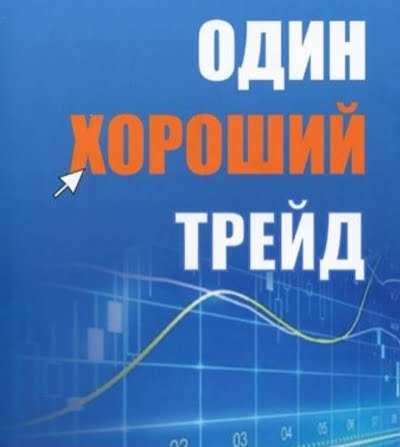
Commercial robot – It is a software tool in the language of Python, which automates the process of trading in the financial markets. It is based on pre-defined strategies and rules, which allow the robot to make trading decisions and execute trades without the need for human intervention. In this article, we will look at the important aspects of creating a trading robot in the Python programming language and its use in algorithmic trading.
Benefits of Using a Trading Robot
Using a trading robot in algorithmic trading has many advantages. Firstly, The robot is able to process and analyze large amounts of data much faster, than a person. It can analyze many financial instruments and market conditions at the same time, which allows it to make more informed trading decisions.
Secondly, The trading robot works without emotions. Human emotions, such as fear or greed, can adversely affect the decision-making process in trade. The robot, on the other hand, works on the basis of predetermined strategies and rules, This allows him to remain objective and eliminates the influence of emotions on trading decisions.
Why Use Python to Develop a Trading Robot?
Python is one of the most popular programming languages for developing trading robots. It has a number of advantages, which make it an ideal choice for algorithmic trading.
Firstly, Python has a simple and straightforward syntax, which makes it accessible to developers of all levels. This allows you to quickly create and test new trading strategies.
Secondly, Python has a huge developer community and many libraries, specialized in financial analysis and algorithmic trading. Library, Such as Pandas, numpy and matplotlib, Provide powerful tools for working with financial data, And the BackTrader library allows you to create and test trading strategies.
Besides, Python is portable and supports a variety of operating systems, which makes it a universal language for developing trading robots.
Creating a trading robot in Python
Step 1: Installing Python and required libraries
The first step in creating a trading robot in Python – installing the Python interpreter and required libraries. Python can be downloaded from the official website and installed on your computer. To work with financial data and develop trading strategies, it is also important to install libraries, Such as Pandas, numpy and matplotlib. Libraries are installed using the pip package manager.
Step 2: Defining a trading strategy
Before you start developing a trading robot, It is necessary to determine the trading strategy. Strategy – It is a set of rules and algorithms, according to which the robot will make decisions on entering and exiting trades. The strategy can be based on different approaches, such as technical analysis, Fundamental analysis or statistical models. It is important to clearly define the rules of the strategy and parameters, which will be used by the robot for decision-making.
Step 3: Get data for analysis
To develop a trading robot, you need to have access to financial data for analysis. There are several ways to get data, including the use of specialized financial APIs, Web scraping or the use of historical data. API (Application Programming Interface) provide access to up-to-date quote data, orders and execution of trades. Web scraping allows you to get data from financial market websites. Historical data can be downloaded or purchased from data providers. It is important to choose a data source, that fits your needs and trading strategy.
Step 4: Data analysis and development of trading signals
After receiving the data, it is necessary to analyze it and develop trading signals. Data analysis can include a variety of techniques, such as the calculation of technical indicators, Perform statistical analysis or apply machine learning. The developed trading signals determine the conditions for entering and exiting trades. It is important to thoroughly test and optimize trading signals on historical data, To make sure of their effectiveness.
Step 5: Development of the portfolio management module
Portfolio management is an important part of a trading robot's operation. The portfolio management module defines:, What assets will be included in the portfolio, what positions will be opened and how the capital will be distributed among the various assets. This module also manages position size and risk, and can also make portfolio rebalancing decisions in accordance with a given strategy.
Step 6: Robot testing and optimization
After the completion of the development of the robot, it is necessary to carry out testing and optimization. Testing allows you to evaluate the performance of the robot on historical data and check its compliance with the specified rules and strategy. Optimization involves adjusting the parameters of the strategy and improving its performance. It is important to use a variety of testing methods, such as backtesting and forward testing, to ensure the stability and reliability of the robot.
Interaction with the exchange and execution of transactions
Choosing an exchange and getting API keys
To interact with the exchange and execute transactions, you need to select a suitable exchange and get API keys. API keys provide access to the exchange's functions, such as receiving data on quotes and orders, Trade execution and portfolio management. Each exchange has its own requirements and procedure for obtaining API keys, that should be studied and implemented.
Working with the exchange API to retrieve data and execute trades
After receiving the API keys, you can start working with the exchange API. The API allows you to get up-to-date data on quotes, orders and execution of trades, as well as perform trading operations. It is important to properly configure API requests and process the received data in accordance with the logic of your robot. You should also take into account the restrictions and rules of the exchange, To avoid possible errors and problems during interaction.
Risk management and performance monitoring
Development of the risk management module
Risk management is an important aspect of trading. The development of a risk management module allows you to control potential losses and risks. This module defines loss limitation mechanisms, such as stop-loss orders or take-profit orders, as well as position size and other parameters, which affect the level of risk. Risk management helps maintain stability and protect the portfolio from large losses.
Monitoring and analysis of the results of the trading robot
Monitoring results is an important part of the trading robot's operation. Regular monitoring allows you to monitor the performance of the robot, the results of its trading operations and the overall financial condition of the portfolio. Analysis of the results helps to identify the strengths and weaknesses of the robot, identify the need for adjustments or changes in strategies. It is also important to analyze statistical data, such as profitability, Maximum drawdown, Sharpe ratio and other indicators, To evaluate the efficiency and stability of the robot.
Conclusion
In this article, we looked at the process of creating a trading robot in the Python programming language from scratch. We have outlined the important steps, starting from the installation of Python and the necessary libraries, before developing a trading strategy, data analysis and interaction with the exchange. Risk management and performance monitoring were also considered as important aspects of the successful operation of a trading robot.
Python provides ample opportunities for the development of trading robots due to its simplicity, flexibility and a rich set of libraries. However, it is important to remember, that the development and use of a trading robot requires thorough testing, optimization and control. Continuous improvement of strategy and adaptation to changes in the market are key factors for successful trading.
FAQs
1. Is it possible to use another programming language to develop a trading robot? Yes, You can use other programming languages to develop a trading robot. However, Python is widely used in algorithmic trading due to its simplicity, flexibility and a rich set of libraries.
2. What are the main benefits of using a trading robot? The main benefits of using a trading robot include automating the trading process, Analyze large amounts of data, lack of emotional influence and the ability to work around the clock.
3. How does the trading robot interact with the exchange?? The trading robot interacts with the exchange via API (Application Programming Interface). APIs allow you to get quote data, orders and execution of trades, as well as perform trading operations in accordance with the specified strategy.
4. How important is risk management in algorithmic trading?? Risk management is a critical aspect in algorithmic trading. The development and configuration of the risk management module allows you to control losses and maximize profits, ensuring the stability and stability of the trading process;.
5. How Monitoring Results Helps to Improve the Performance of a Trading Robot? Result monitoring allows you to monitor the performance of the trading robot in real time. Analysis of the data obtained allows you to identify problem areas and make the necessary adjustments to the trading strategy, which can ultimately lead to better results.



